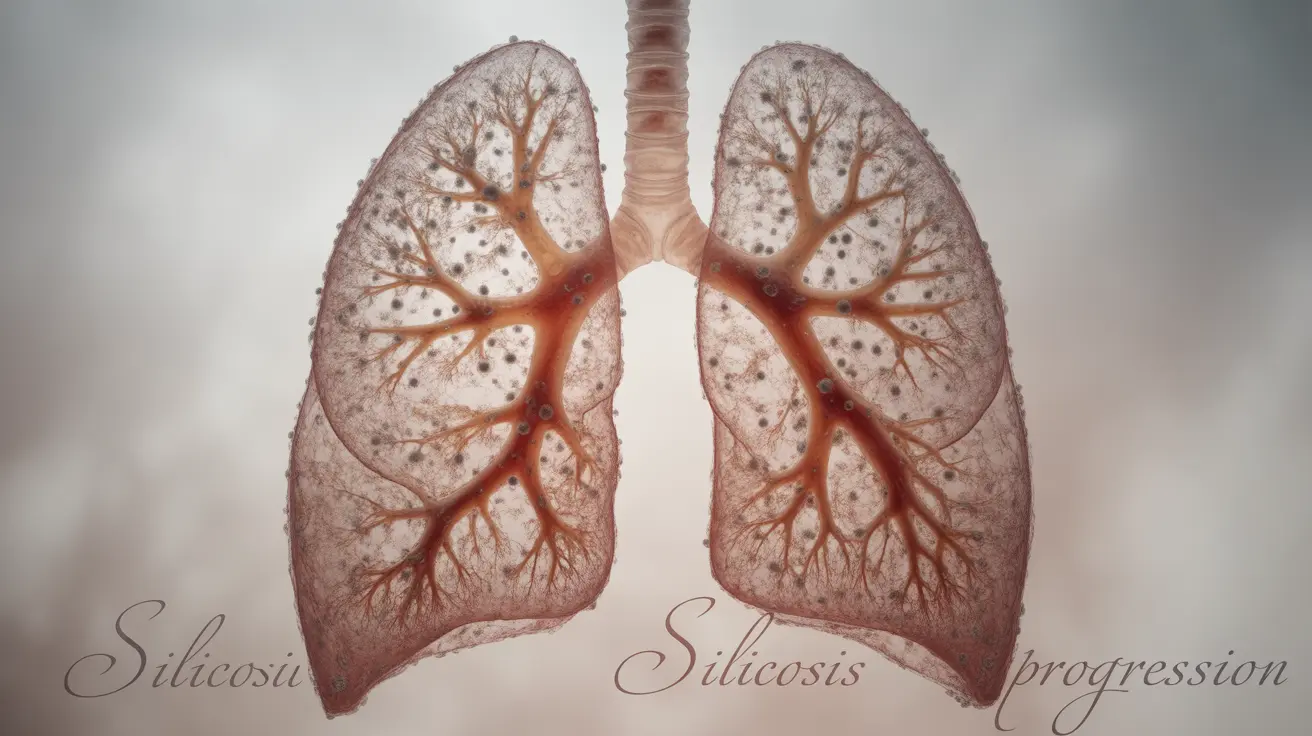Silicosis is a serious occupational lung disease caused by prolonged exposure to crystalline silica dust. This progressive and potentially life-threatening condition primarily affects workers in industries such as mining, construction, and sandblasting, where silica dust particles are commonly present in the air.
Understanding the risks, symptoms, and available treatments for silicosis is crucial for both workers in high-risk industries and healthcare providers. Early detection and proper management can significantly impact the quality of life for those affected by this occupational hazard.
What is Silicosis and How Does It Develop?
Silicosis occurs when tiny particles of silica dust are inhaled and become trapped in the lung tissue. Over time, these particles cause inflammation and scarring, leading to hardened areas called nodules that make breathing increasingly difficult. The body's immune response to these particles can trigger a cascade of inflammatory reactions that progressively damage the lungs.
Types of Silicosis
There are three main forms of silicosis, each distinguished by the duration and intensity of exposure:
- Acute silicosis: Develops within weeks to months of intense exposure
- Accelerated silicosis: Appears 5-10 years after exposure
- Chronic silicosis: Develops slowly over 10-20 years of low-level exposure
Signs and Symptoms
The symptoms of silicosis can vary depending on the type and severity of the condition. Common indicators include:
- Persistent cough
- Shortness of breath, especially during physical activity
- Chest pain
- Fatigue
- Weight loss
- Fever
Diagnosis and Testing
Healthcare providers use several methods to diagnose silicosis and assess its severity:
- Chest X-rays to identify characteristic patterns of lung damage
- Pulmonary function tests to measure breathing capacity
- CT scans for detailed imaging of lung tissue
- Complete medical history, including occupational exposure
- Physical examination
Treatment Approaches
While there is no cure for silicosis, various treatments can help manage symptoms and improve quality of life:
- Bronchodilators to ease breathing
- Supplemental oxygen therapy
- Pulmonary rehabilitation programs
- Cough medications
- Prevention of further exposure
- Treatment of associated conditions
Prevention and Workplace Safety
Preventing silicosis involves implementing strict workplace safety measures:
- Using proper respiratory protection equipment
- Wet methods to control dust
- Local exhaust ventilation systems
- Regular workplace air monitoring
- Employee training and education
- Compliance with OSHA regulations
Complications and Associated Conditions
Silicosis can lead to several serious complications:
- Increased susceptibility to tuberculosis
- Progressive massive fibrosis
- Heart problems
- Respiratory failure
- Increased risk of lung cancer
- Chronic bronchitis
Frequently Asked Questions
What are the common symptoms of silicosis and how soon do they appear after silica dust exposure? Symptoms typically include shortness of breath, persistent cough, and fatigue. The timing varies by type: acute silicosis can develop within weeks, while chronic silicosis may take 10-20 years to show symptoms after exposure.
How is silicosis diagnosed and what tests are typically used to confirm the disease? Diagnosis involves chest X-rays, CT scans, pulmonary function tests, and a detailed occupational history. Doctors look for characteristic patterns of lung damage and assess breathing capacity through various tests.
What treatment options are available to manage silicosis and improve breathing? While silicosis cannot be cured, treatments include bronchodilators, oxygen therapy, pulmonary rehabilitation, and medications to manage symptoms. The primary focus is on preventing further exposure and maintaining lung function.
How can workers prevent silicosis and reduce their risk of silica dust exposure? Prevention involves using proper respiratory protection, implementing dust control measures, following workplace safety protocols, and regular monitoring of air quality. Employers must comply with OSHA regulations for silica exposure limits.
What complications can arise from silicosis, and why is tuberculosis screening important for patients with silicosis? Complications include respiratory failure, heart problems, and increased risk of lung cancer. Tuberculosis screening is crucial because silicosis patients have a significantly higher risk of developing TB due to compromised lung defense mechanisms.




